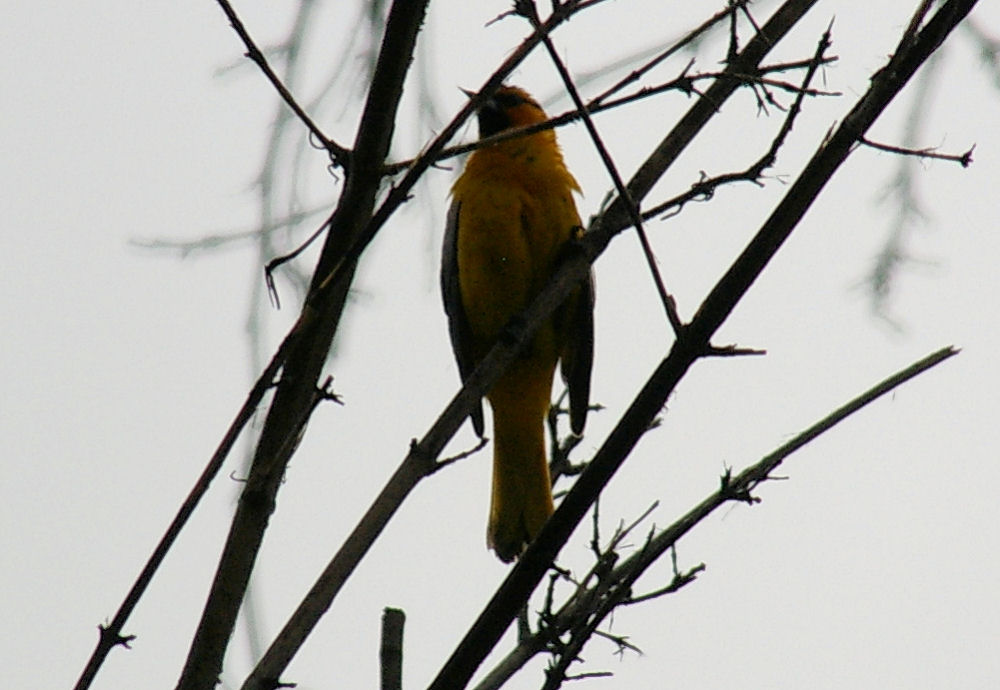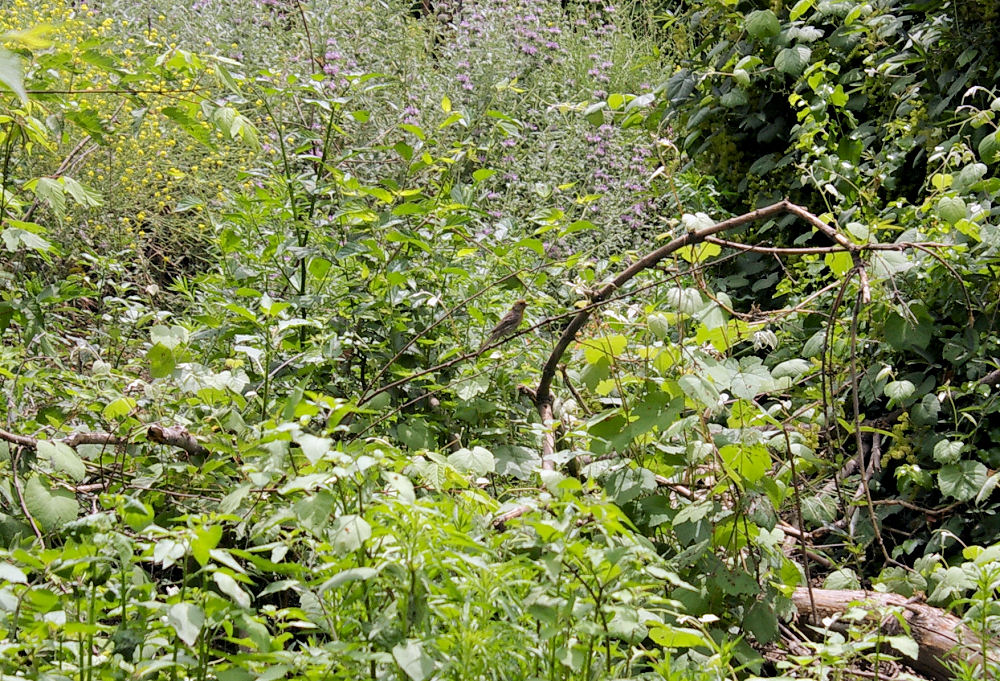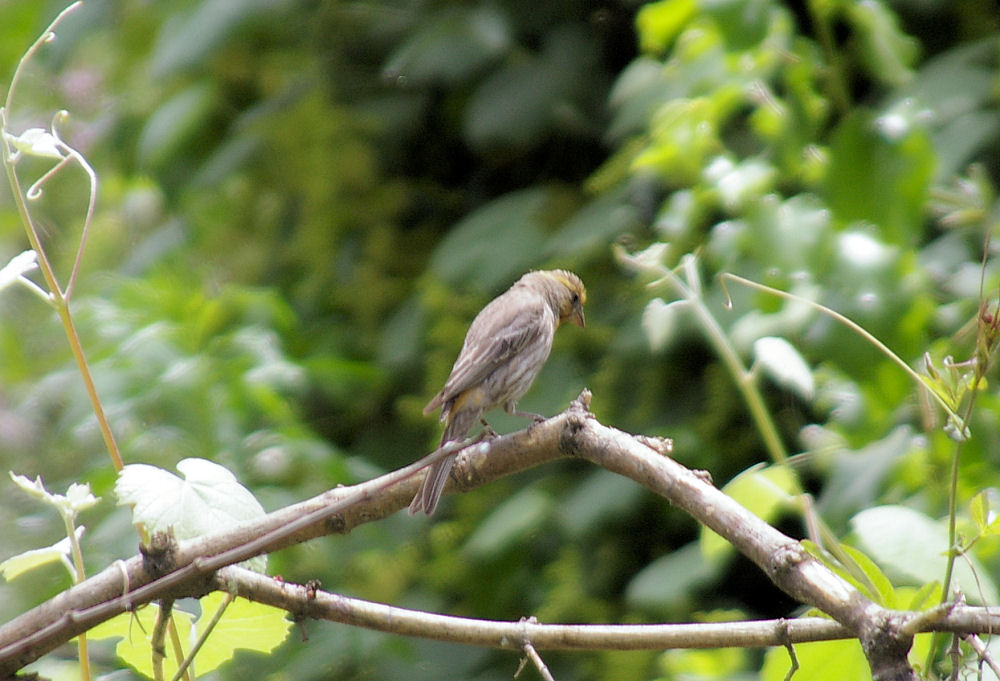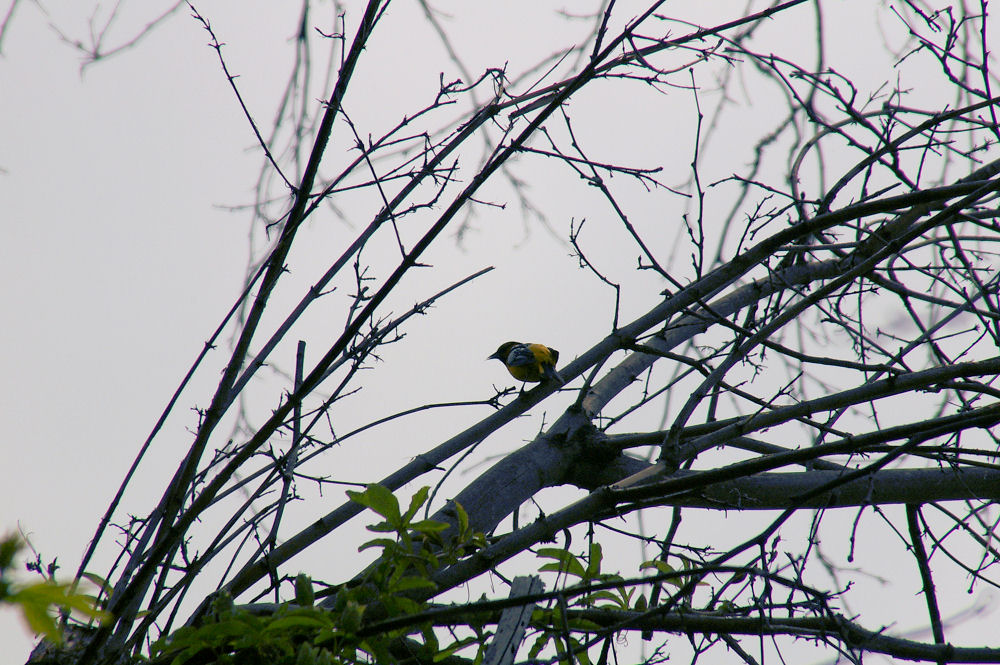|
|
|
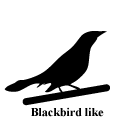 |
Hooded Oriole
|
| Icterus cucullatus | |
Named for the orange hood on the male, this slender oriole is at home in suburban areas of the southwestern United States. It originally nested in the trees of desert oases, but finds ornamental trees suitable.
Interesting Information
When the nest is suspended from palm leaves, the female pokes holes in the leaf from below and pushes the fibers through, effectively sewing the nest to the leaf.
Description
Adult Description
-
Size: 18-20 cm (7-8 in)
-
Weight: 24 g (0.85 ounces)
-
Medium-sized oriole.
-
Slender body.
-
Long tail.
-
Long, slightly decurved bill.
-
Male bright orange with black bib, female drab yellow.
Sex Differences
Male colorful bright orange with black mask and throat, female drab and unpatterned. Similar in size.
Male
Entirely orange or orange-yellow head, nape, rump, and underparts. Black bib and narrow mask. Back black, with pale edges in fresh plumages. Wings black with two white wingbars, the upper one wide and bold, the lower one narrow. Tail black.
Female
Olive yellow on head, rump, and tail. Underparts dull, but brighter yellow. Back dull grayish olive. Two white wingbars, top one broader than lower. Wings dusky.
Immature
Immature male resembles adult female, but with a black bib and mask less extensive than adult male. Head, nape, tail, and underparts yellow. Wings dusky gray with two white wingbars. Black bib. Immature female resembles adult female.
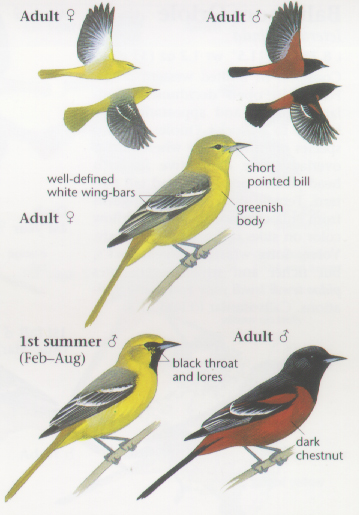
Photo taken from: The Sibley Field Guide by David Allen Sibley
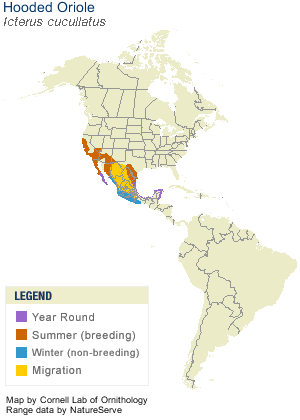
© 2003 Cornell Lab of Ornithology
|
Habitat |
|
Breeds in areas with scattered trees, such as desert oases and along streams. Also in mesquite brush. Common in urban and suburban areas. Fond of palm trees. |
|
Behavior |
|
Searches for insects among leaves; may hang upside down. Often perched near ground. |
|
Food |
|
Insects, spiders, nectar, and fruit. |
Taxonomy
| Kingdom: | Animalia |
| Phylum: | Chordata |
| Subphylum: | Vertebrata |
| Class: | Aves |
| Order: | Passeriformes |
| Family: | Icteridae |
| Genus: | Icterus |
| Species: | Icterus cucullatus |
| Subspecies: | Icterus cucullatus cucullatus |
| Icterus cucullatus igneus | |
| Icterus cucullatus nelsoni | |
| Icterus cucullatus sennetti | |
| Icterus cucullatus trochiloides |
Similar Species |
|
|
Bird Sound |
|
Song a rapid, choppy series of warbles. Call note a sharp, nasal "wheet." Also a rolling, dry chatter. |
|
Eggs look like this |
|
Photo taken from: ARCTOS Collaborative Collection Management Solution |
